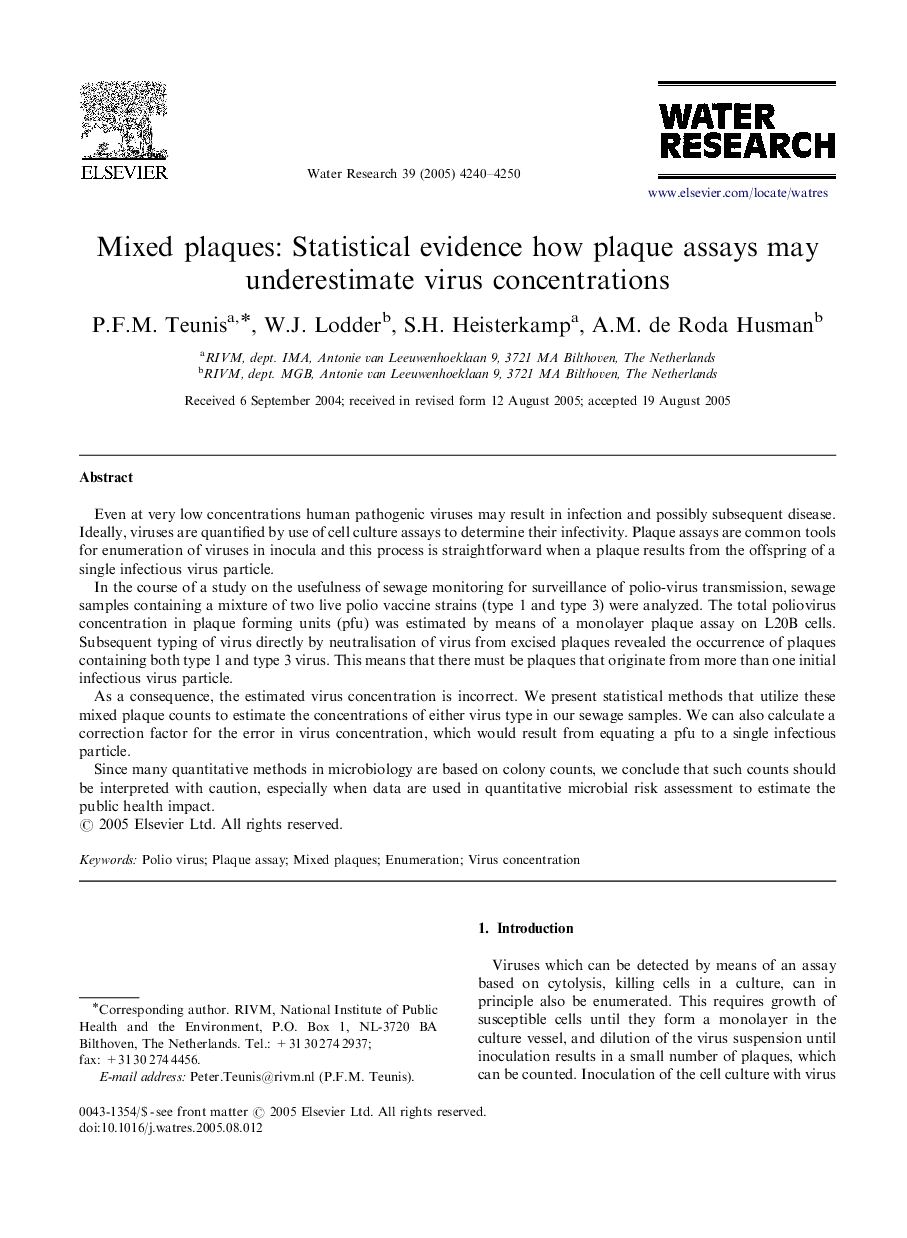| Article ID | Journal | Published Year | Pages | File Type |
|---|---|---|---|---|
| 4484987 | Water Research | 2005 | 11 Pages |
Even at very low concentrations human pathogenic viruses may result in infection and possibly subsequent disease. Ideally, viruses are quantified by use of cell culture assays to determine their infectivity. Plaque assays are common tools for enumeration of viruses in inocula and this process is straightforward when a plaque results from the offspring of a single infectious virus particle.In the course of a study on the usefulness of sewage monitoring for surveillance of polio-virus transmission, sewage samples containing a mixture of two live polio vaccine strains (type 1 and type 3) were analyzed. The total poliovirus concentration in plaque forming units (pfu) was estimated by means of a monolayer plaque assay on L20B cells. Subsequent typing of virus directly by neutralisation of virus from excised plaques revealed the occurrence of plaques containing both type 1 and type 3 virus. This means that there must be plaques that originate from more than one initial infectious virus particle.As a consequence, the estimated virus concentration is incorrect. We present statistical methods that utilize these mixed plaque counts to estimate the concentrations of either virus type in our sewage samples. We can also calculate a correction factor for the error in virus concentration, which would result from equating a pfu to a single infectious particle.Since many quantitative methods in microbiology are based on colony counts, we conclude that such counts should be interpreted with caution, especially when data are used in quantitative microbial risk assessment to estimate the public health impact.
